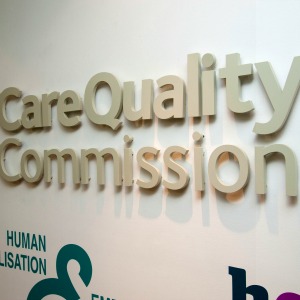CQC apologises to practices over risk rating errors

The CQC has been forced to apologise to a small number of GP practices after admitting mistakes in its risk ratings scheme, and is now facing growing pressure to abandon the banding system.
The regulator has told 60 practices given an initial risk banding of one or two that they are no longer considered a high risk, after it made revisions to the indicators – but has refused to name the practices involved.
It comes after a huge backlash from the profession after the CQC published its internal ‘intelligent monitoring’ ratings on almost all practices in England, based on QOF data and the GP Patient Survey. These were picked up by national and local media and interpreted as evidence that ‘one in six practices is failing’.
The CQC said it was revising indicators relating to the GP Patient Survey, as well as those around emergency admissions, dementia diagnosis, COPD and coronary heart disease prevalence.
The CQC even admitted that it got some of its patient access data ‘the wrong way round’ on one of its measures, meaning good practices were marked down – despite GPs flagging up the mistake earlier. Seven practices were also given a higher risk rating as a result of the revisions to the CQC’s indicators
Pulse had previously reported concerns over the accuracy of much of the data, including for those practices that had dropped elements of QOF and for the indicators in the patient survey. The CQC said it was reviewing its assurance procedures to prevent mistakes recurring.
What has changed?
The CQC published practices’ risk ratings of one to six – with one or two signifying a potential risk – based on 38 different indicators from the GP Patient Survey and QOF scores. However, it was forced to revise the following five ratings:
• Proportion of respondents to the GP patient survey who stated that the last time they wanted to see or speak to a GP or nurse they were able to get an appointment.
• Number of emergency admissions for 19 ambulatory care sensitive conditions per 1,000 population.
• Ratio of reported versus expected prevalence for COPD.
• Ratio of expected to reported prevalence of coronary heart disease.
• Dementia diagnosis rate adjusted by the number of patients in care homes.
Professor Nigel Sparrow, the commission’s senior national GP advisor and responsible officer, said: ‘Following feedback from national and local stakeholders, and working with NHS England, we have now completed a comprehensive review of the data and, as a result, there are a number of changes.
‘The vast majority of GP practices will not be affected by these changes. Overall, 60 practices (less than 1%) previously in bands one and two will move to bands of lower priority for inspection.
‘We will contact each of those practices to apologise for any concern this may have caused to GPs, staff and patients.’
But both the RCGP and the GPC have called for the entire system to be withdrawn. RCGP chair Dr Maureen Baker said in a letter to the regulator that the admission of errors was ‘shocking news, especially for those GP surgeries who have been wrongly labelled and for the patients whose trust in their family doctors has been cruelly shaken’.
She wrote: ‘It is ironic that a system supposedly introduced to support patients has left them confused and let down. The damage caused by this episode will not easily be undone.’
Dr Andrew Mimnagh: ‘We complained and our risk rating was adjusted’

Our practice was initially given a risk banding of two – the second-highest risk rating.
At that point, I realised there was something wrong.
We looked at the practice’s performance data, and there were some things in there that we looked at and said, ‘yes, we know about that’. But the one indicator that stood out was the emergency admissions one, for which the data were simply not correct.
The basic numbers would have required the postman to deliver me a three-foot stack of casualty letters every day, which clearly wasn’t happening.
After we raised the issues that we discovered with our practice data, the practice eventually received a call from the CQC. They told the practice manager that they were looking into the areas concerned.
We were also informed that the practice would be reallocated from band one to band four – a much lower priority for inspection. We are now waiting to hear the date of our inspection.
Although our case has been resolved, I do think the CQC was incredibly naïve to publish the ratings in the public domain.
Dr Andrew Mimnagh is a GP in Sefton.
Pulse July survey
Take our July 2025 survey to potentially win £1.000 worth of tokens














